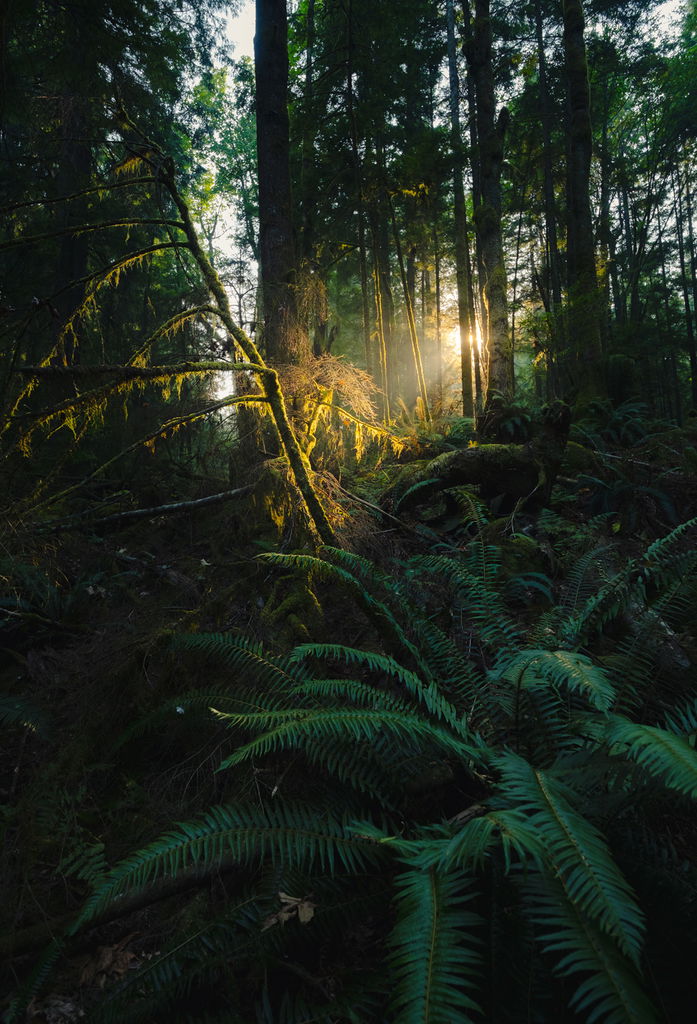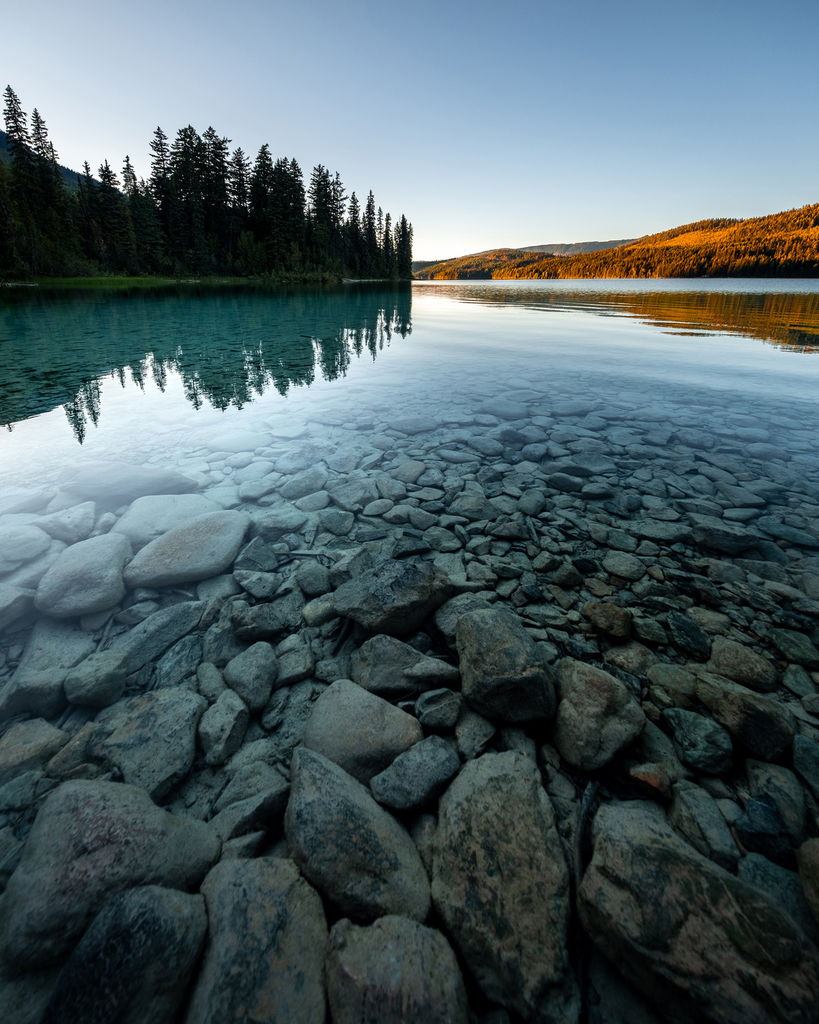Nature and landscape photographer Oliver Wheeldon discusses the inherent challenges of his craft
“I vividly remember the first moment I picked up a camera,” recalls Oliver Wheeldon, a filmmaker and photographer who specialises in creating content about the natural world. “It was a wedding. My uncle had a DSLR he’d put down for the night, and I asked if I could use it. He said yes, and I remember that being the moment I got the bug.
“I enjoyed the idea of freezing a moment. Especially at a wedding, there are so many lights and colours and people, it’s ripe for memory making. Having a camera in my hands and picking frames, choosing moments and getting active with all these aspects of photography – I was hooked.”
Soon after, Oliver threw himself into image making. “I didn’t know what I wanted to photograph at that point, I just knew I liked the process,” he muses.

That initial desire to hold all the emotion of a scene within a single frame found further impulse during brief trips and travel breaks. “I started making pictures on holidays and simply enjoying working things out,” Oliver explains. “How do I encapsulate this moment, this light, the temperature in a single image?
“That challenge, I found, is the allure of photography because it’s an impossible task. You can’t ever achieve it – you can’t encapsulate a place in a single image. It’s the joy of the chase, in a way.
“That extended into nature because that’s my love: landscapes and the natural world. I want to share what I find beautiful, interesting or dramatic about our world. And it always comes back to that challenge: how do I convey this in an image?”

Purposeful photography
Oliver’s route to full-time photography and filmmaking started with a much older art form. “I went to university to study fine art, predominantly painting,” he reminisces. “I’d paint landscapes from my own photos. Social media was a catalyst in that my photographs then had a place to go – previously they would stay on my computer as references, but suddenly this platform encouraged you to share these files.”
What really changed things was Oliver’s first visit to Antarctica. “To cut a long story short, I’d received a competition invite to win a trip to one of the seven continents. I had to pick which continent and explain why I wanted to go. Until then, I hadn’t realised anyone could go to Antarctica – I thought it was just for scientists and explorers.
“I didn’t win the competition, but got fixated on the idea; the seed had been sown. I wanted to expand what I’d been doing on my family holidays and travel to photograph somewhere my images might mean something, since there’s a lot of awareness to be spread around Antarctica.
“Not just in terms of climate change – I found out the Antarctic Treaty is up for renewal in the year 2041, which led me to an organisation called 2041, which takes people to Antarctica to learn about the environment. When I found out about it, I immediately thought: ‘Okay, this is my thing. I have to do this – I will give my photography services to this initiative.’”

Searching for natural beauty
Having since branched out on his own, Oliver travels the world creating photos and films encouraging people out into nature.
“It’s about sharing my love for the world around us,” he explains. “I think it’s the modern-day equivalent of being a painter. Painters want to show the world a vision of the world they see. They’re waking up at 4AM, seeing the light of the sunrise that no one else gets to see – and sharing that.
“That’s my equivalent. Sometimes it’s grand landscapes – Yosemite, or the deserts of Abu Dhabi. Sometimes it’s tiny details – just the way water bends around a rock, or the way a leaf catches the light. It doesn’t have to be big or small. It’s about showcasing this amazing world we get to inhabit, with a hope of inspiring others to travel and get outside.
“That’s my biggest unifying message – I want other people to see the world and love it, and hopefully then protect it too.”
While grand landscapes are certainly an important part of his work, Oliver stresses that all aspects of nature can be enjoyed.
“I don’t want it to be inaccessible, ever. I don’t want to be living in an exclusive world,” he emphasises. “Yes, I could go somewhere as amazing as Antarctica, but I could also go in my back garden and see an amazing leaf – that was actually one of my favourite moments from a recent Fujifilm launch event.
“I was using the FUJIFILM GFX100S II with the FUJINON GF500mmF5.6 R LM OIS WR, and got this photo of a leaf. It’s one of my favourites I’ve ever made – everything collided perfectly within a tiny window that I could then photograph with a massive lens on a massive camera. It’s a nice metaphor for that sentiment – beauty is all around us if you know where to look.”

The best equipment for landscape photography
“I like travelling light with as little as possible, which is why I originally moved to Fujifilm. I wanted to minimise equipment but improve image quality, so I moved to the FUJIFILM X-T1,” Oliver recalls. “It was a bit of a shock, how small it was, but a lot of my favourite photos ever were made with the X-T1.
“I use my FUJIFILM X-H2S for everything now – it’s a hybrid beast. I did a recent job in Tenerife, and the natural light was fading while the lights of the town were coming on. I didn’t have a tripod to make the photo properly – but I knew if I could stand still enough, I could put my shutter speed below 1/20 sec and it would come out sharp thanks to the in-body image stabilisation.
“I love how tough the X-H2S is as well – I can just throw it in a bag. It’s been in deserts, rainforests and to Antarctica. It’s been all over the place, survived everything I’ve thrown at it and continues to perform. It’s a perfect camera for me.”

When it comes to lenses, Oliver strikes a balance between covering a wide range of focal lengths while not becoming overburdened. “I mostly work with primes, if conditions allow,” he explains. “I use the FUJINON XF16mmF1.4 R WR, XF35mmF1.4 R and the XF50-140mmF2.8 R LM OIS WR – so I’ve got a wide prime, a tighter prime and a zoom that covers 50mm to 140mm, which is awesome, especially with the stabilisation. That’s my three-lens kit.
“If I’m going somewhere particularly exciting, I might use a bigger lens – when I went to Ecuador, I had the FUJINON XF150-600mmF5.6-8 R LM OIS WR and the XF30mmF2.8 R LM WR Macro for insects and things.
“It depends on the situation, but I’ve learnt not to forgo a lens because, inevitably, the situation you need it for will show up. I always endeavour to carry as much as I can with me. Some people will bring one lens and enjoy the challenge of composing everything with that, but I can’t let myself – I have too much FOMO,” Oliver laughs.

A purist’s approach
Oliver’s fine art background has given him a unique perspective on the honesty of photography. “In painting, you understand how far people go to alter the real view because you’re allowed to,” he remarks. “There’s a lot of artistic licence to remove a telegraph pole or a bin.
“Landscape photographers can do that too, but I believe there’s a slight increase in responsibility to be accurate to the location. I wouldn’t ever want to photograph somewhere and inspire someone to visit that place, but when they get there it’s full of telephone wires and cables I edited out of the photo,” he continues.
“A lot of people take creative licence with their photography. Personally, for landscape and travel, I like to edit as little as possible. I don’t know if my experience in painting has made me separate photography as its own art form.
“That’s one of the most vivid memories I have from university. I was painting landscapes quite realistically and my tutor would say: ‘Why? What are you conveying with this that you couldn’t have done with the photograph?’

“It was such a good point; I had no answer. I liked the landscape, and thought people might appreciate it more as a painting. But what I was really doing was spending 30 hours painting something I already had a photograph of. That’s why I’ve become more of a purist with my photography.”
With a desire to sell the true majesty of whatever scene he points his lens at, Oliver has thoughts on what the biggest challenges are for landscape photographers.
“I’ve been to the Grand Canyon, I’ve been to Antarctica – all these amazing places – and nothing can prepare you for the scale of these landscapes. They are so much bigger than you could ever imagine.”

“Something a little newer for me is embracing a telephoto lens and finding a little notch of detail or an interesting angle. That can give a sense of scale because of the lens compression of those layers of mountains, for example. I enjoy finding these little frames and compositions within the bigger landscape that give you an idea of the scale, light and texture.”
In many instances, though, a classic painter’s composition is the best option. “I look for a foreground, midground and background because that gives a better chance of getting across a sense of scale,” Oliver explains. “That’s one of the most important things but, as I said, it’s impossible to achieve.”















































